Fig 1
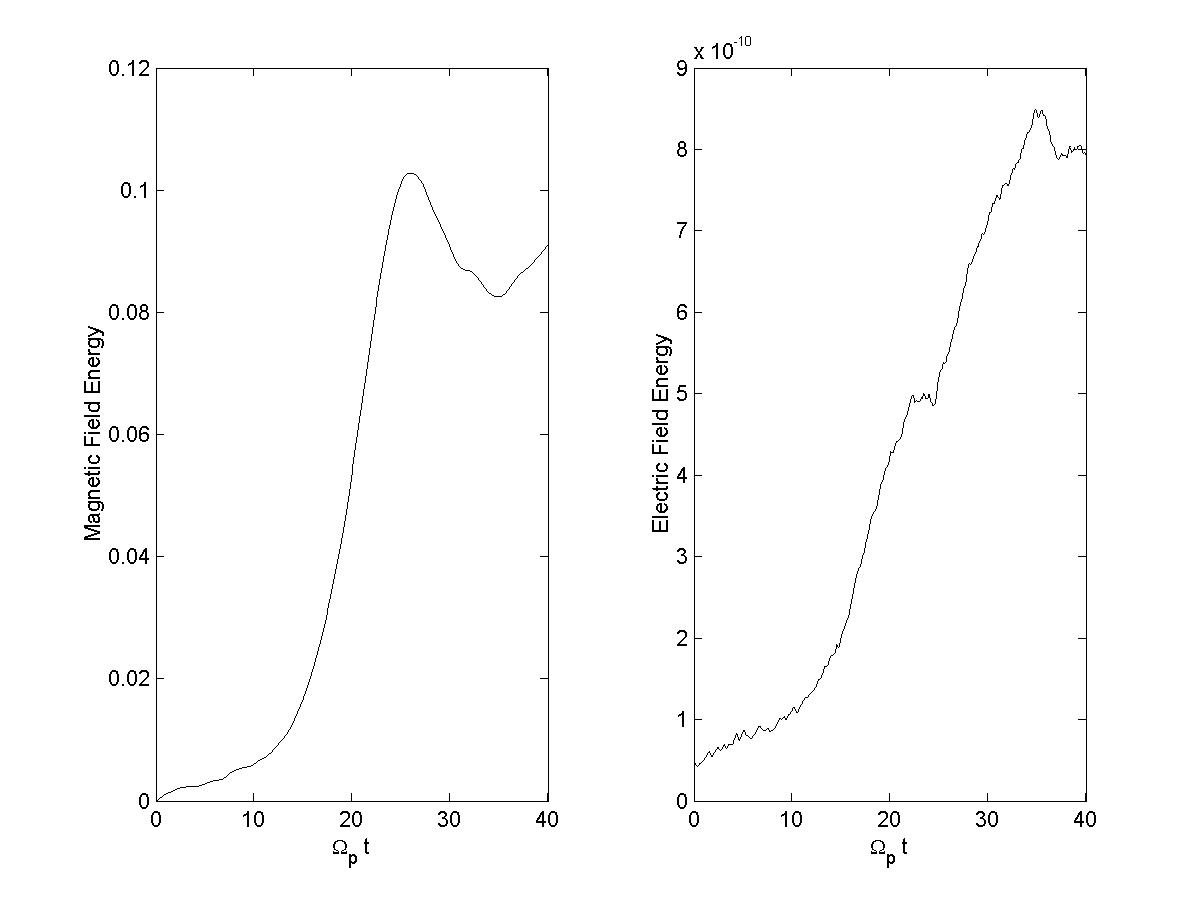
Fig 2

Fig 3

return to index page
Results of testing conditions in "The electromagnetic ion cyclotron anisotropy instability"
by SP Gary and D Schriver, 1987. Hybrid run results using their dispersion solutions for stable and
unstable anisotropic bimaxwellian beam/core distributions are shown below. The dispersion
solutions predicted max growth at k x B = 0.
|
UNSTABLE : Tperp_beam/Tpar_beam = 5.0, Tpar_beam/Tpar_core = 10.0
Fig 1 
|
|
STABLE : Tperp_beam/Tpar_beam = 5.0, Tpar_beam/Tpar_core = 1.0
Fig 2 
|
|
UNSTABLE : Tperp_beam/Tpar_beam = 10.0, Tpar_beam/Tpar_core = 1.0
Fig 3 
|
|
Gary and Schriver bimaxwellian beam:
Fig 4 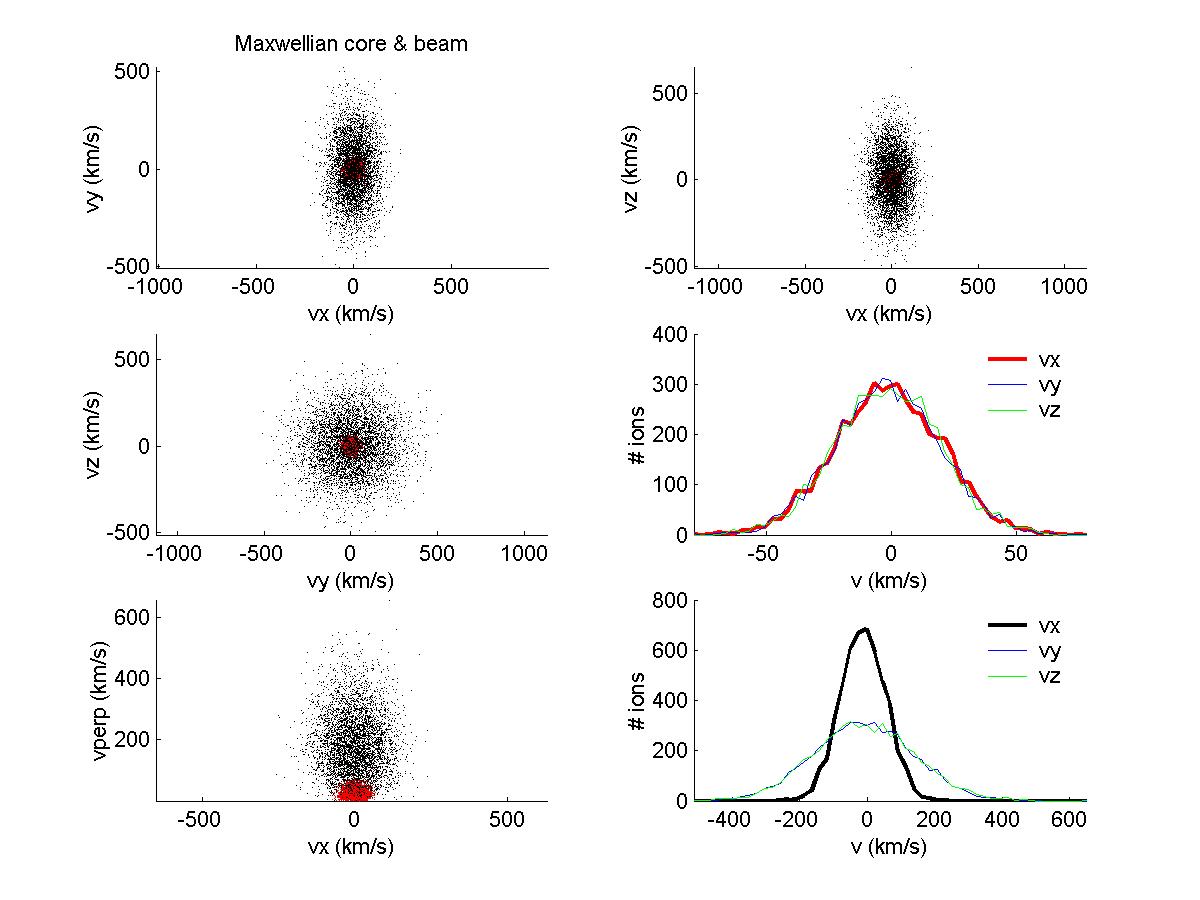
|
Ring beam:
Fig 5 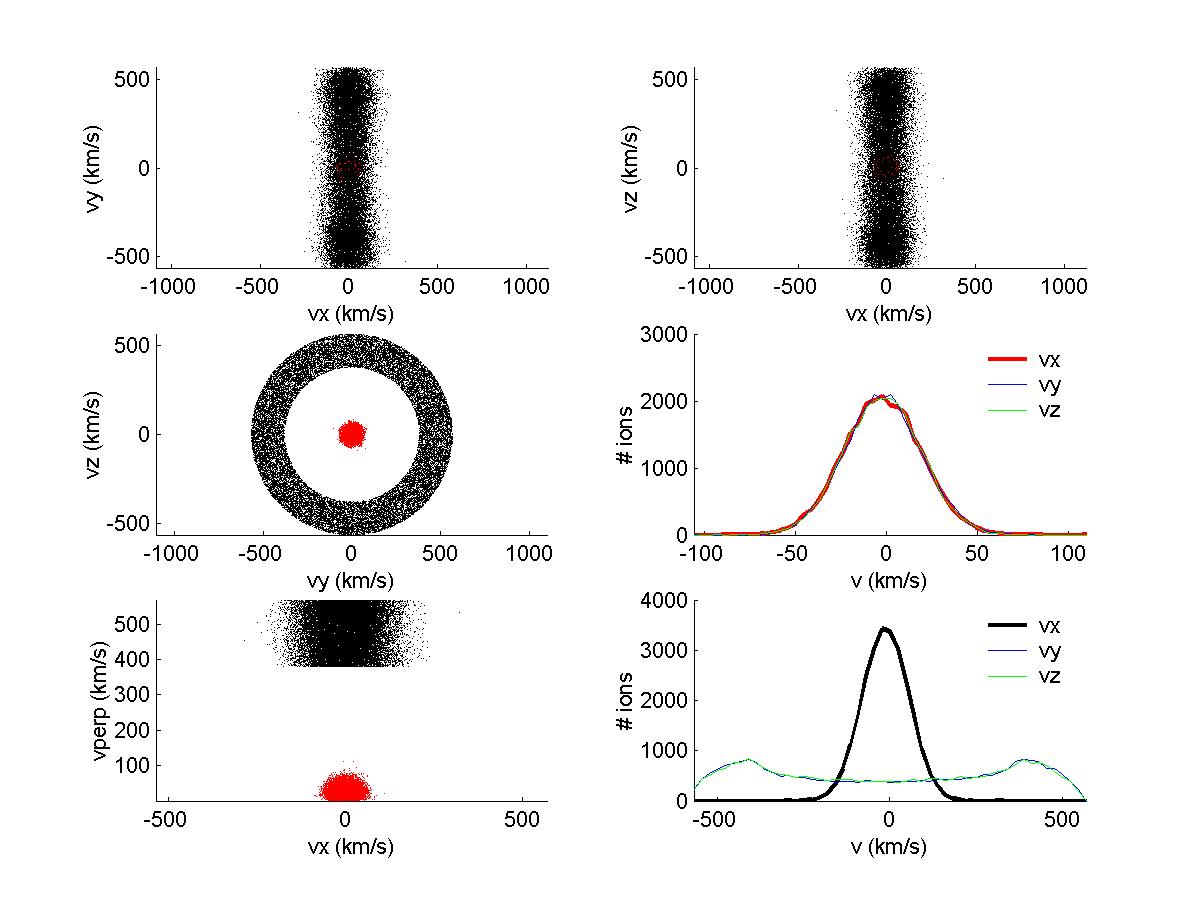
|
|
Phase Space (red = background fixed, black = beam injected) Fig 6 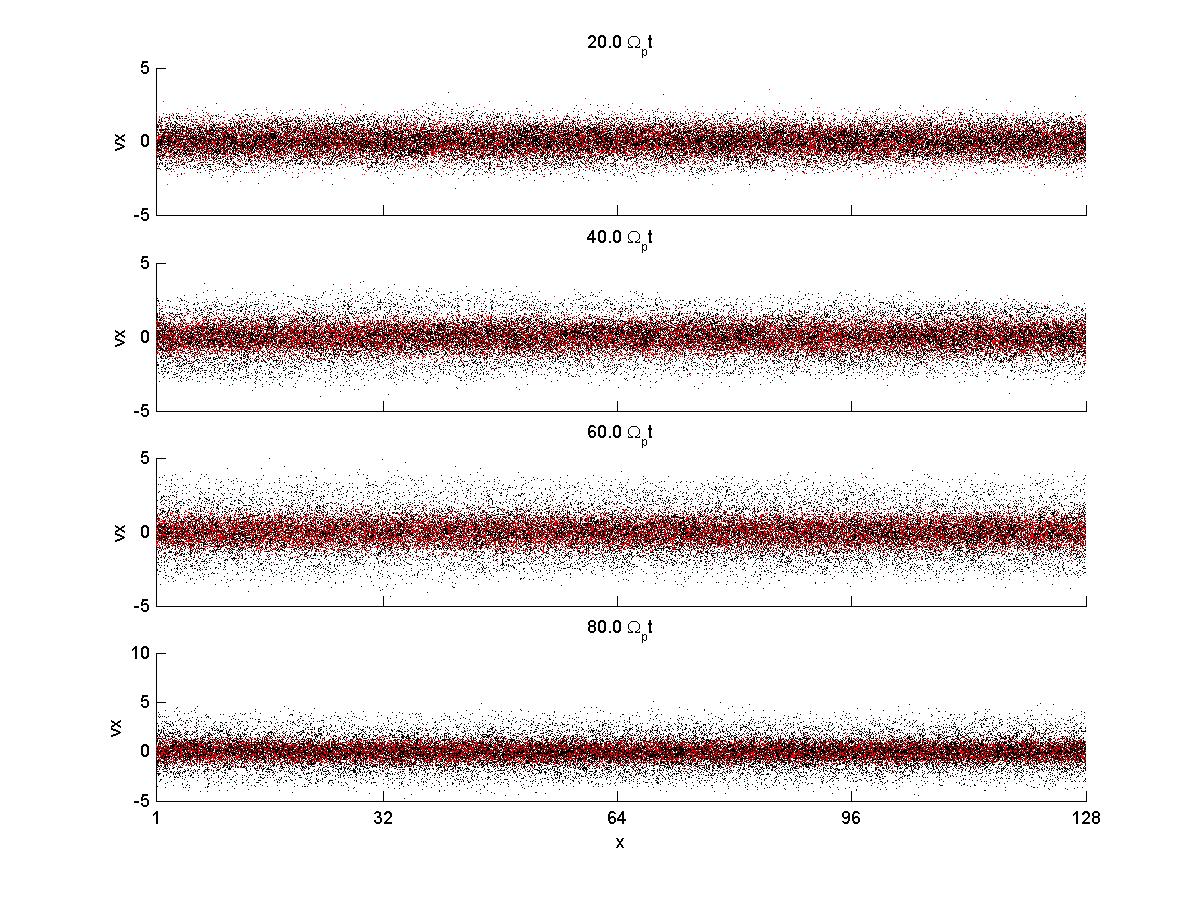
| |
|
Velocity Space
Fig 7 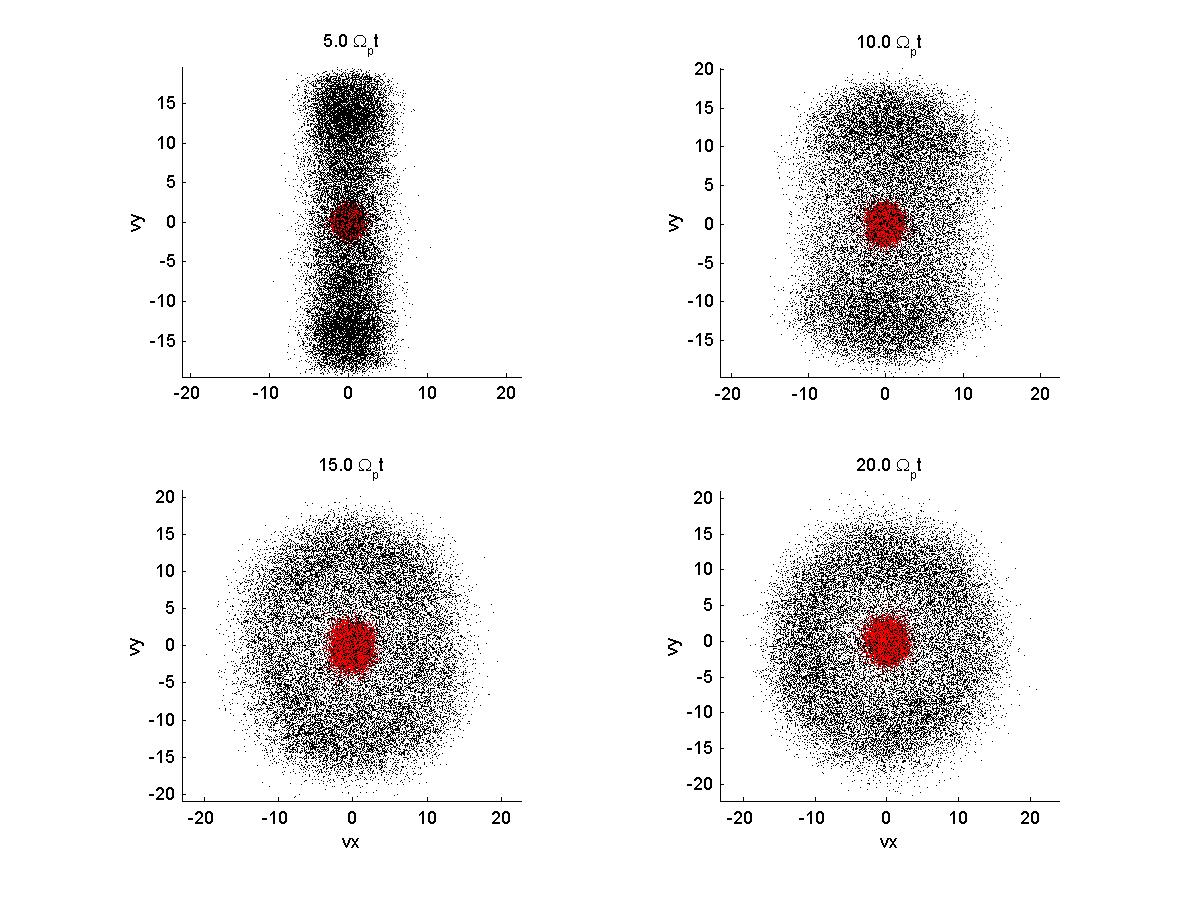
|
Velocity Space
Fig 8 
|
|
Velocity Space
Fig 9 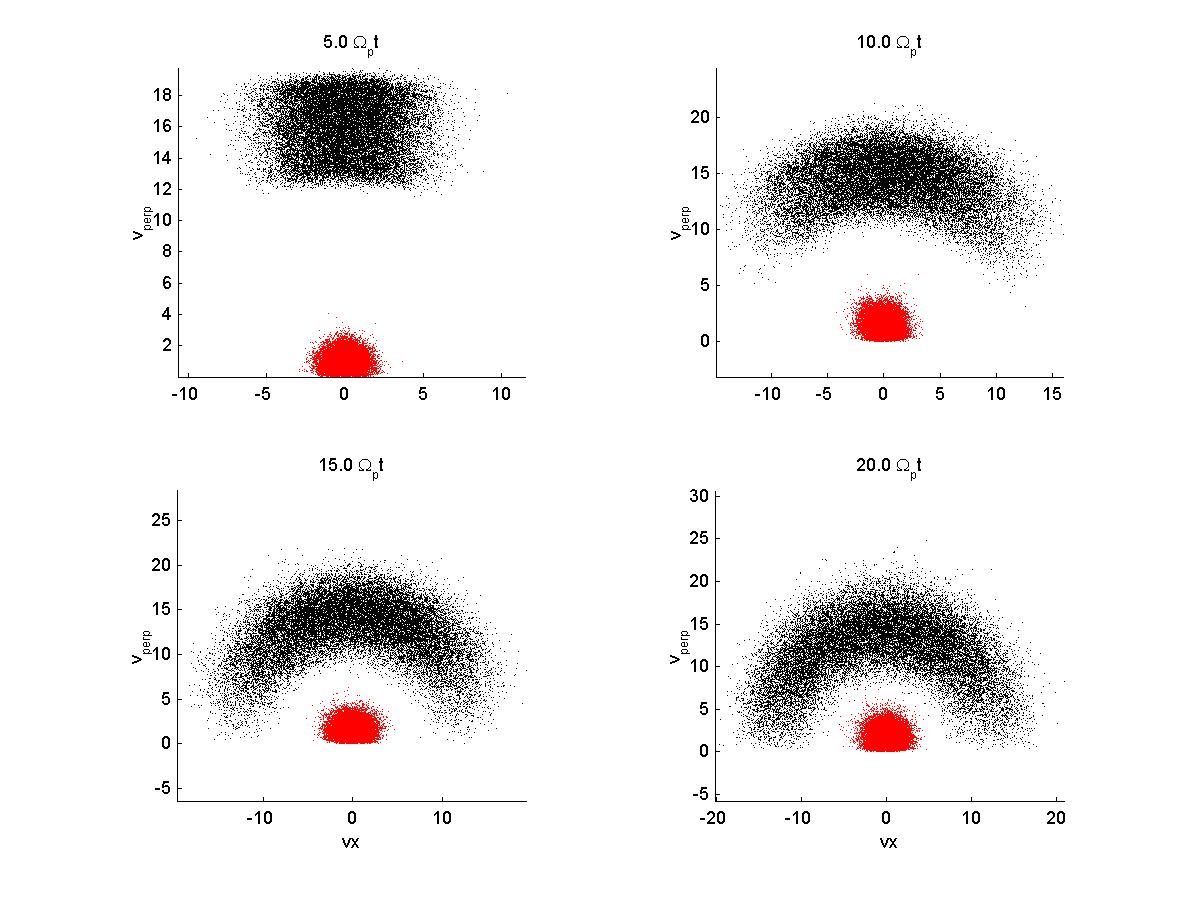
| |
|
By
Fig 10 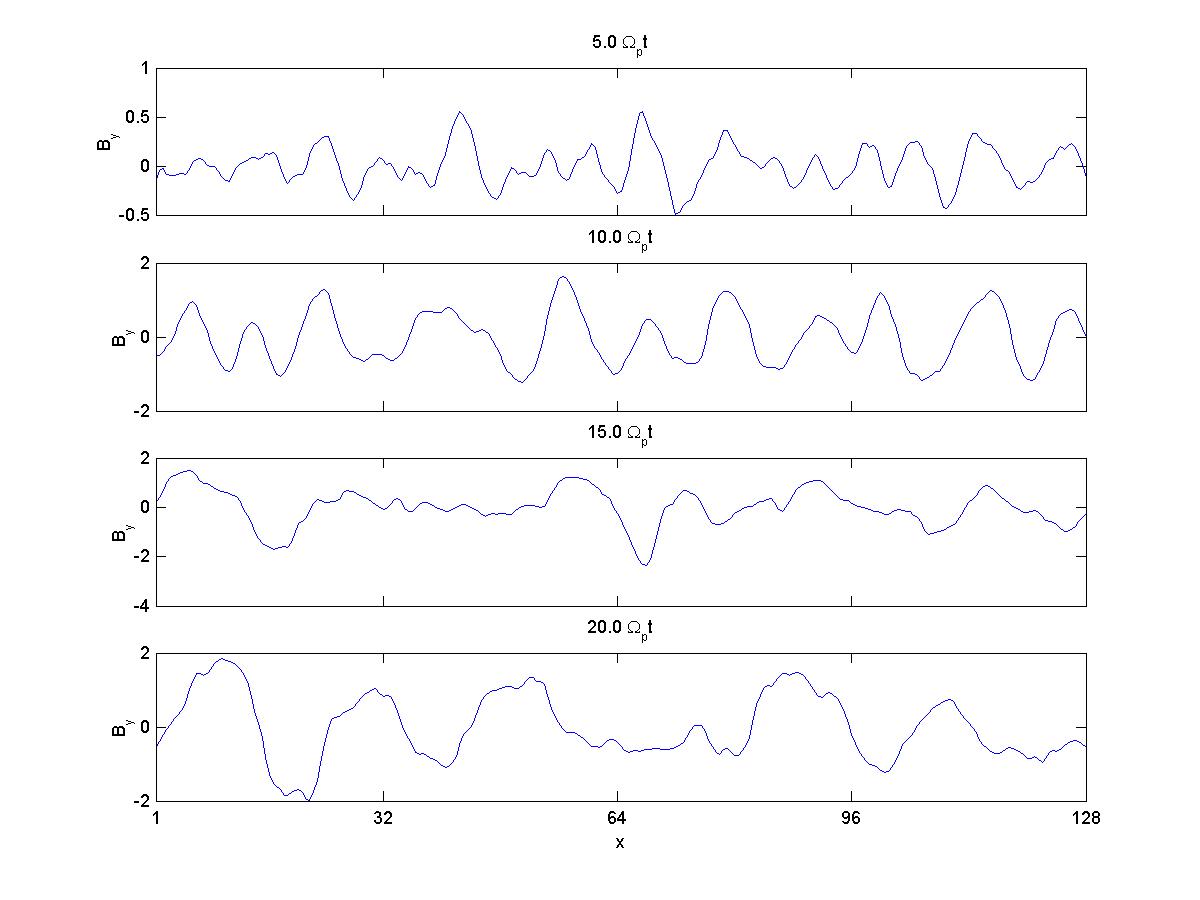
|
Bz
Fig 11 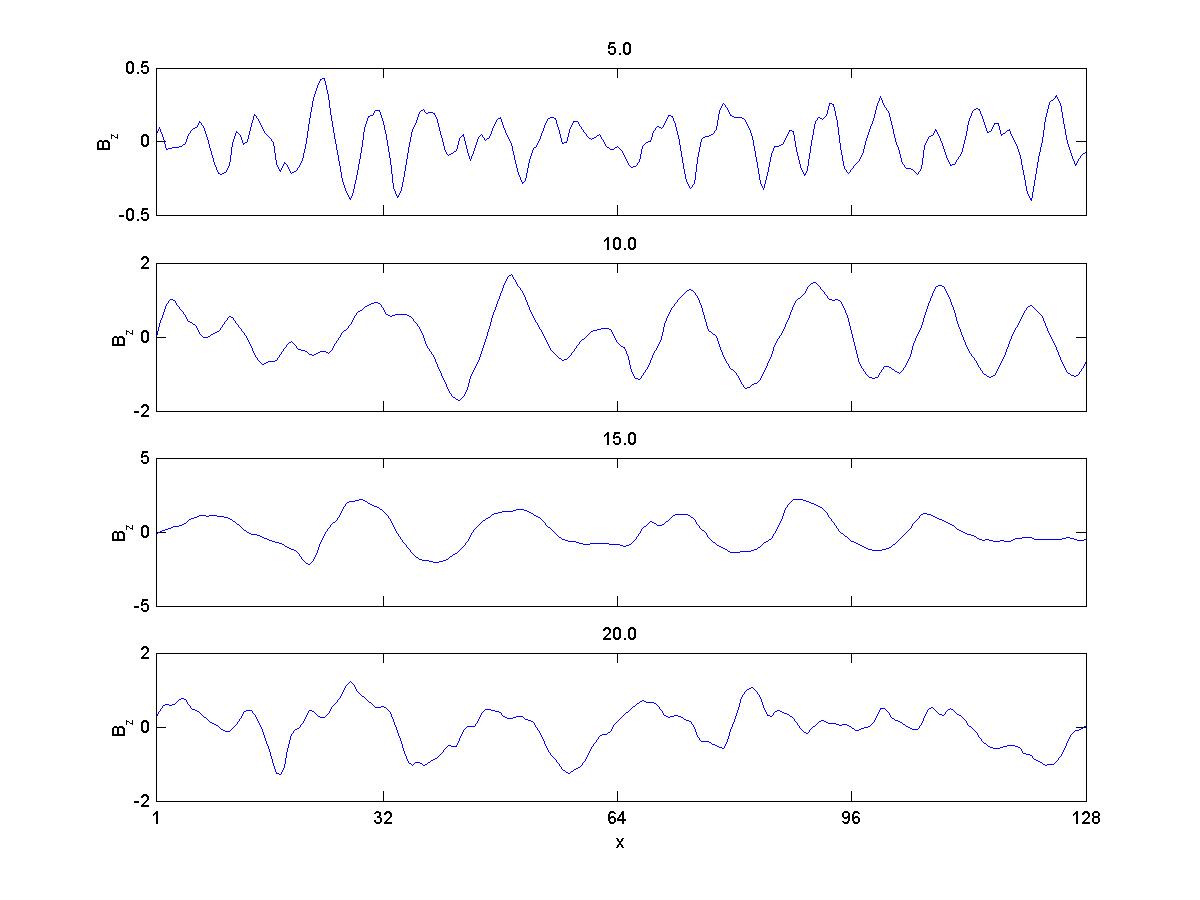
|
|
Phi
Fig 12 
| |
|
B field energy
Fig 13 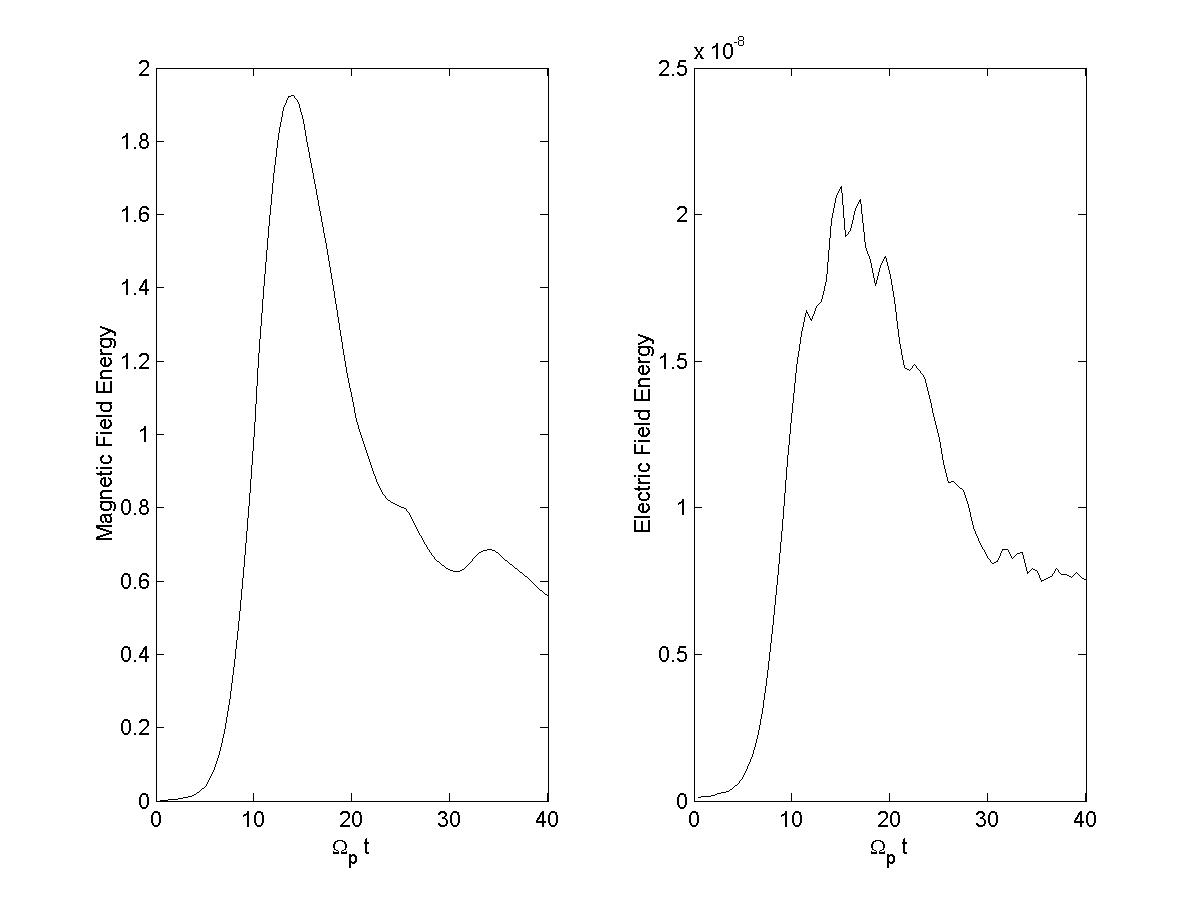
| |
|
Fourier modes
Fig 14 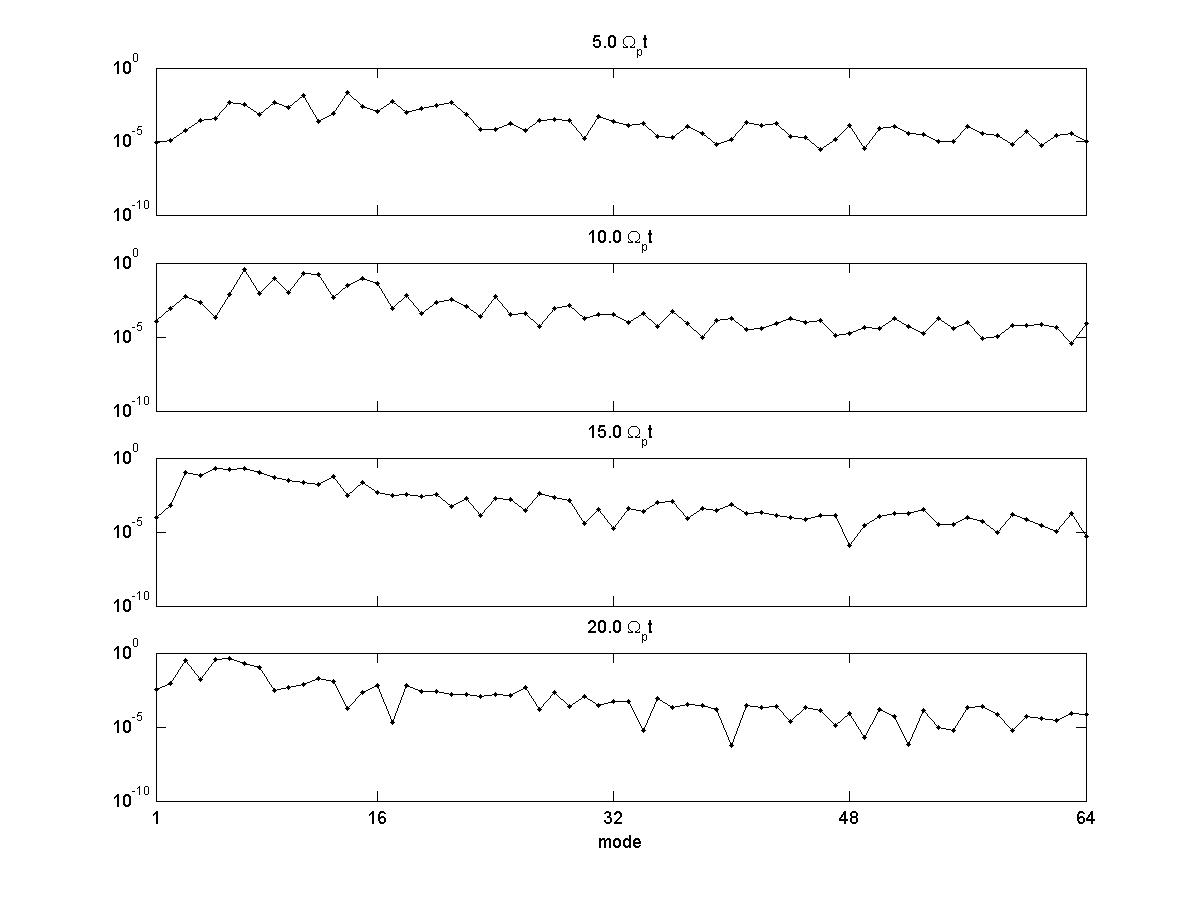
|
return to index page